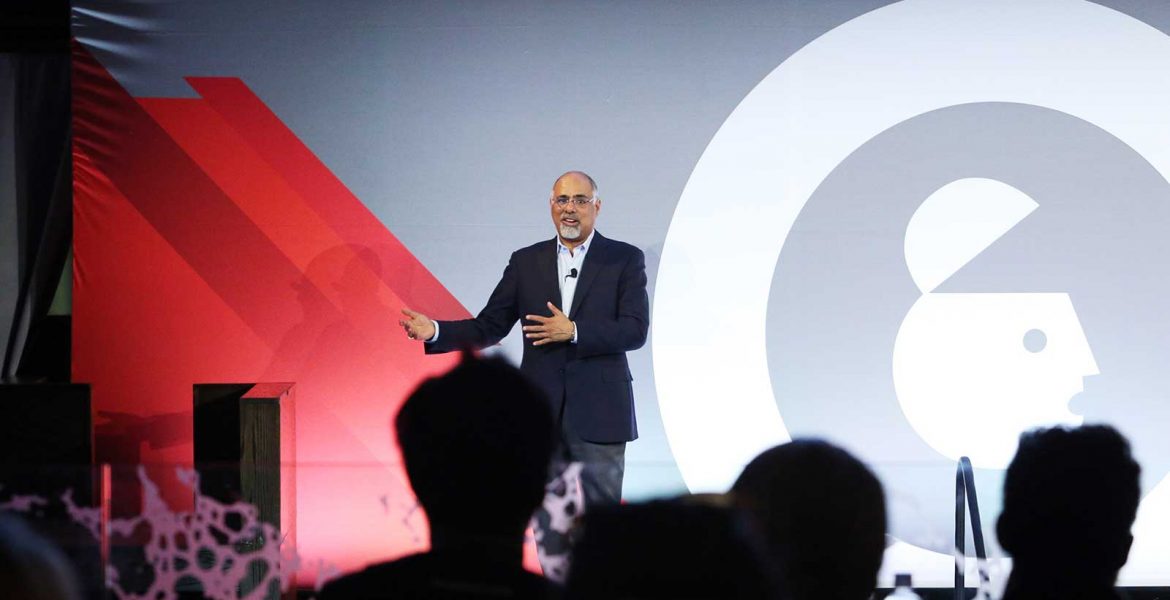Raja Rajamannar believes point-blank: story-telling (as we know it) is dead. He wasted no time letting the audience know where he stands on this issue at his lecture Tuesday afternoon. This point of view is incredible different from many of the other though leaders at Advertising Week, and one we don’t hear of much – most of the time, we’re told that storytelling is the key to any successful advertising campaign. However, despite the pessimistic sounding statement, the Chief Marketing & Communications Officer of Mastercard believes that while storytelling may be dead, that doesn’t mean there aren’t newer and more effective ways to spread a brand’s message.
Globally, about 615 million devices are blocking ads. This figure clearly demonstrates the fact that consumers don’t want to see our ads. They don’t want to be interrupted by someone trying to sell them something they don’t want or need. Consumers today want to see their content and don’t have time for clutter. Society today is wired 24/7, and consumers don’t want to sit through more ads telling them a story. Mastercard has decided to reverse that logic, and make the consumers the storytellers.
Traditionally everything marketers do is to reach consumers and shape their behavior in the favor of a brand, company or product. Instead of using consumer insights, marketers need to shift their thinking away from looking at people only as modules of consumptions and instead start looking at human insights and human truths. Consumption is only one small part of humankind, and if marketers can understand what motivates humans, they can tap into their spending habits simultaneously.
Rajamannar believes that instead of trying to be great storytellers, brands need to put consumers at the forefront and become great story makers instead. Studies show and retail sales data support that consumers value experiences over things. Mastercard took this information and identified four powerful platforms by which to center its Priceless strategy; surprises, cities, specials and causes. The Priceless campaign has evolved from a single traditional advertising campaign to a holistic experiential-driven marketing platform.
Despite the fact that experiential marketing is one of the most expensive and difficult-to-execute tactics, it can have some of the best results, and Mastercard decided the risk was worth the reward. Each of the four aforementioned platforms revolve around experiences – instead of Mastercard telling a story and expecting consumers to listen, they are now letting consumers create the story themselves. Mastercard rewards cardholders with priceless experiences that consumers can’t get anywhere else. Some are surprises such as Justin Timberlake showing up unannounced at a cardholder’s doorstep to hang out. Other experiences are ones that cardholders can’t find anywhere else – a private brunch with renowned chef Geoffrey Zakarian or tickets to watch the Chicago Cubs from the bullpen.
Rajamannar’s biggest piece of advice to marketers and strategic communicators is to think outside the narrow mindset of looking at consumers strictly as consumers. Consumption is just a small part of their diverse and dynamic lives, and once you look at them as humans, your strategy will change drastically. Flipping the script and allowing consumers to tell the narrative is one way to cut through the clutter of 24/7 media consumption by providing a much-needed fresh perspective to advertising and marketing.


I don’t disagree. However, a brand’s storyline can go anywhere. And it’s not like they can escape who they are. We just need to rethink ‘story.’